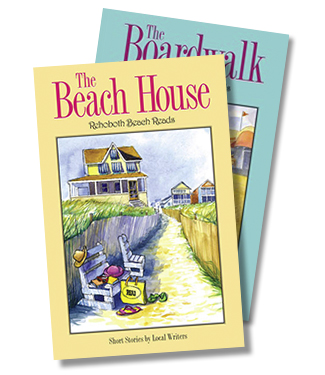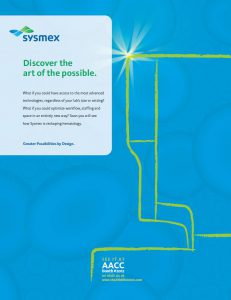Beer, AI and Baby Clydesdales — Breaking Down This Year’s Super Bowl Ads
We’d like to announce the second most exciting match-up of Super Bowl LIX – creative and strategy. As you are very well aware, this is a pretty big time of year for us ad nerds. Some might say it’s the Super Bowl of commercials. So, as we look ahead to our commercial kick-off, Alex Wittchen and I want to break down what we think you’ll see during the big game’s big breaks.
What to expect
AI o’clock.
Where 2023 was the year of bitcoin, this will be the year of AI. Some brands like Meta and GoDaddy are touting new AI‑powered offerings, but even more will streamline production costs by using AI tools behind the scenes, and plenty of brands may just use AI as the butt of their jokes. But what you won’t see are fully AI-generated ads. During the Super Bowl, the idea is king and AI just A-ain’t there yet (just ask Coke and Toys‑r‑us).
Alex’s Takeaway:
AI is a tool, not a concept. The brands that win won’t just use AI—they’ll make it relevant to their brand and audience. If AI doesn’t reinforce a core brand truth or deliver an actual consumer benefit, it’s just another tech buzzword that will be forgotten by the next commercial break.
Raise a glass, or 5.
According to ADWEEK, “Anheuser Busch is the largest Super Bowl advertiser across all beer, alcohol, and consumer packaged goods companies” in 2025. Last year, they secured spots for three of their drinks; this year it’s 5. With advertisers ponying up a pretty penny for airtime – $7 million for 30 seconds of airtime alone – that’s a lot of money spent on watery beer.
Alex’s Takeaway:
Dominating share of voice isn’t the same as dominating consumer mindshare. More ads don’t necessarily mean more impact—it’s about what they say, not just how often they say it. The real win for Anheuser Busch will be if they make each ad feel distinct while reinforcing a consistent brand narrative across all five.
Take that, rewind it back.
As usual, many brands are taking the ol’ “if it ain’t” broke approach to their big investments. We’ve got baby Clydesdales, action stars named Chris, and a big nostalgia play (looking at Hellmann’s bringing us back to the When Harry Met Sally diner).
Alex’s Takeaway:
Nostalgia works when it’s more than a reference. The brands that get it right will use nostalgia to reinforce brand equity or spark new relevance—like Hellmann’s tying their diner moment to modern food trends. The ones that get it wrong? They’ll feel like reruns with no clear reason to exist today.
What not to expect
What’s got 4 doors and is sitting out of the Super Bowl?
As of last week, only one automaker confirmed a 2025 Super Bowl ad. The reason could be that the industry has been heavily focused on making and marketing electric vehicles which customers have been slow to adopt, along with the current administration’s likelihood to end subsidies and policies that benefit electric vehicle manufacturers. Long story short, if you’re looking for a quick way to save a buck – $7 million on air seems like a good place to start.
Alex’s Takeaway:
Sitting out is a strategy, too. Automakers aren’t just cutting costs; they’re recalibrating priorities. If a category that used Super Bowl ads as a staple suddenly opts out, it’s a signal that their marketing focus is shifting. The real question: Where are they investing instead?
Shock factor
My guess is that most brands will like their ads how Anheuser Busch likes their beer – watered down and palatable for the masses. Humor is going to be light and the heavy emotional spots will be few and far between. In this climate, brands will be less looking to make bold statements in favor of broad appeal and a feel‑good laugh.
Alex’s Takeaway:
Mass appeal doesn’t have to mean forgettable. The best brands will find ways to be memorable within the safe zone—whether that’s through strong storytelling, unique execution, or a fresh perspective. Playing it safe is fine. Playing it dull isn’t.
State Farm
Though they had a big presence in last year’s game and were cued up for more of the same, they decided to pull their spot in light of the LA fires to “focus firmly on providing support to the people of Los Angeles.” In other words, they had received some flack as of late for dropping policies in LA in the past few years due to extreme weather. So spending all of that money on a big ad with big celebs wouldn’t be a great lewk.
Alex’s Takeaway:
Marketing decisions don’t exist in a vacuum. A brand’s public perception can shape what they shouldn’t say just as much as what they should. The smartest marketers know when to step back—and when to reinvest in rebuilding trust through actions, not ads.
So grab your chips, your dip, and your copies of “Inner Excellence” – there’s a lot to look forward to this weekend.











 Though we all know about color — the ones we like and the ones we don’t like — color is often misunderstood. In certain combinations, colors can scream or whisper. This is because colors are influenced by adjacent colors. In our industry, designers understand how important color choices are. To the untrained eye, color choice — when not dictated by corporate graphic standards — may appear random. Far from it. We put a lot of thought into our decisions. Certain color combinations create harmony. Contrasting colors ensure the legibility of the message we’re trying to communicate. Colors are all relative — to each other. The difference between a message that’s screaming for attention and one that should be softer in tone can be achieved by which colors are used in the design.
Though we all know about color — the ones we like and the ones we don’t like — color is often misunderstood. In certain combinations, colors can scream or whisper. This is because colors are influenced by adjacent colors. In our industry, designers understand how important color choices are. To the untrained eye, color choice — when not dictated by corporate graphic standards — may appear random. Far from it. We put a lot of thought into our decisions. Certain color combinations create harmony. Contrasting colors ensure the legibility of the message we’re trying to communicate. Colors are all relative — to each other. The difference between a message that’s screaming for attention and one that should be softer in tone can be achieved by which colors are used in the design.




